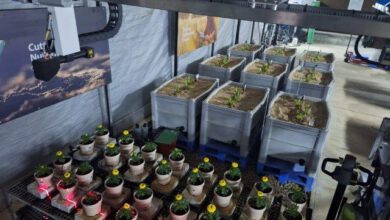Problematic occurrence and biological control possibilities of the solanum mealybug
In Israel the solanum mealybug develops on 30 plant species
Protasov Alex protasov@volcani.agri.gov.il Mendel Zvi*
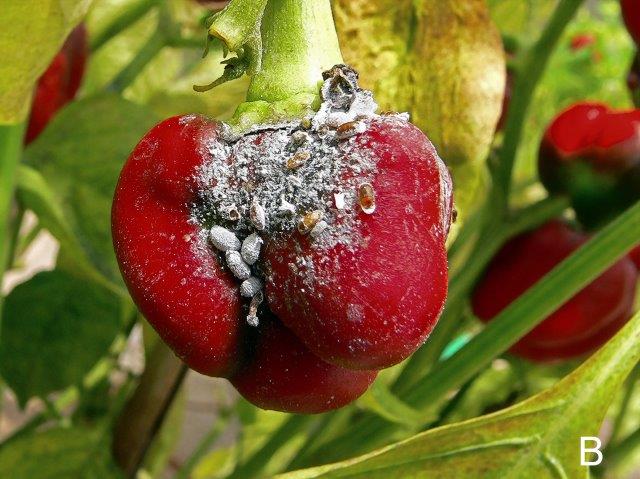
the solanum mealybug phenacoccus solani ferris (hemiptera; pseudococcidae), a nearctic species, was first found in israel in the late 1990s, and soon became a major pest. the mealybug poses a serious management challenge. the absence of natural enemies that might suppress the increasing populations, and its high resistance to routinely applied insecticides undermine two decades of endeavoring to establish environmentally friendly management in the local greenhouse industry. since the mid 2000s we have intensified our efforts to study the mealybug and its natural enemies.
.jpg) |
fig 1. parasitic wasps of solanum mealybug
a – aenasius phenacocci; b – leptomastix ephyra; c – leptomastix algirica
in israel the solanum mealybug develops on 30 plant species (table 1). it causes severe damage to several vegetable, herb and bulb crops in greenhouses, where severe injury is inflicted on green pepper capsicum annuum and tarragon artemisia dracunculus, and the latter species is also badly affected in the open fields. the mealybug also develops on common weeds, which further complicates its control. this pest’s generation time is 35 days at 250c, and it produces an average of 120 offspring during 4-5 weeks. the solanum mealybug easily survives the high summer temperatures of the greenhouses, where the daily temperature fluctuates between 17 and 470c. the adult mealybug overwinters in the soil, on or near the roots. in the arava and jordan valley it survives the harsh summer agricultural break on plant crop parts beneath the soil. between 2004 and 2008 we did not record any natural enemies among its populations in studied israeli sites.
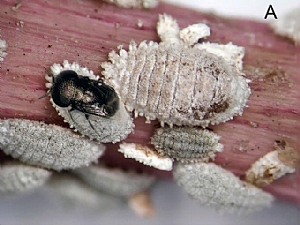 |
.jpg) |
fig 2. (a) oviposition of parasitic wasp aenasius phenacocci and (b) a typical instance of solanum mealybug is treated by the wasp about three weeks after the parasites
in light of the difficulties involved in the application of insecticides against the solanum mealybug we have launched a biological control project using three parasitic wasps (hymenoptera: encytidae). we concentrated on the import, identification and development of mass rearing of three parasitoid species: aenasius phenacocci (ashmead) was introduced from california, whereas leptomastix ephyra noyes & hayat and leptomastix algirica trjapitzin were recovered from the local solanum mealybug population in 2009 (fig 1). of the last two, the former species is known from a single record in india, whereas the latter is well known from other mealybug species in the eastern and southern mediterranean basin.
we studied the effects of temperature on their development, host range among several mealybug species, and encapsulation rates of the eggs of studied encyrtids by several mealybug species. a. phenacocci develops on the solanum mealybug at high temperatures (~300c) but not at 200c or below (fig 2a-b; fig 4); on the other hand, the studied leptomastix spp. developed well at temperatures of 20-280c (fig 3; fig 4b).
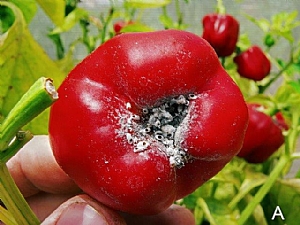 |
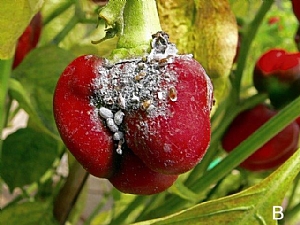 |
fig 4. details of solanum mealybug on pepper after the emerging of (a) parasite wasp aenasius phenacocci and (b) parasite wasp leptomastix ephyra
the mean percentages of egg encapsulation by the solanum mealybug were 54.8, 6.5 and 3.3% for a. phenacocci, l. ephyra and l. algirica, respectively. complete encapsulation occurred with the studied parasitoids by the tested mealybugs of the genus planoccocus and by pseudococcus longispinus; about half of the eggs were encapsulated by other tested pseudococcus spp. recovery of a. phenacocci was recorded in several release sites, as well as establishment in pepper greenhouse after seeding releases.
today all three parasitoid species are considered appropriate for augmentation releases in greenhouse crops.
table 1. a list of hosts of solanum mealybug, phenacoccus solani.
*department of entomology. institute of plant protection. agricultural research organization. the volcani center.
fig 3. oviposition of parasitic wasp leptomastix ephyra

